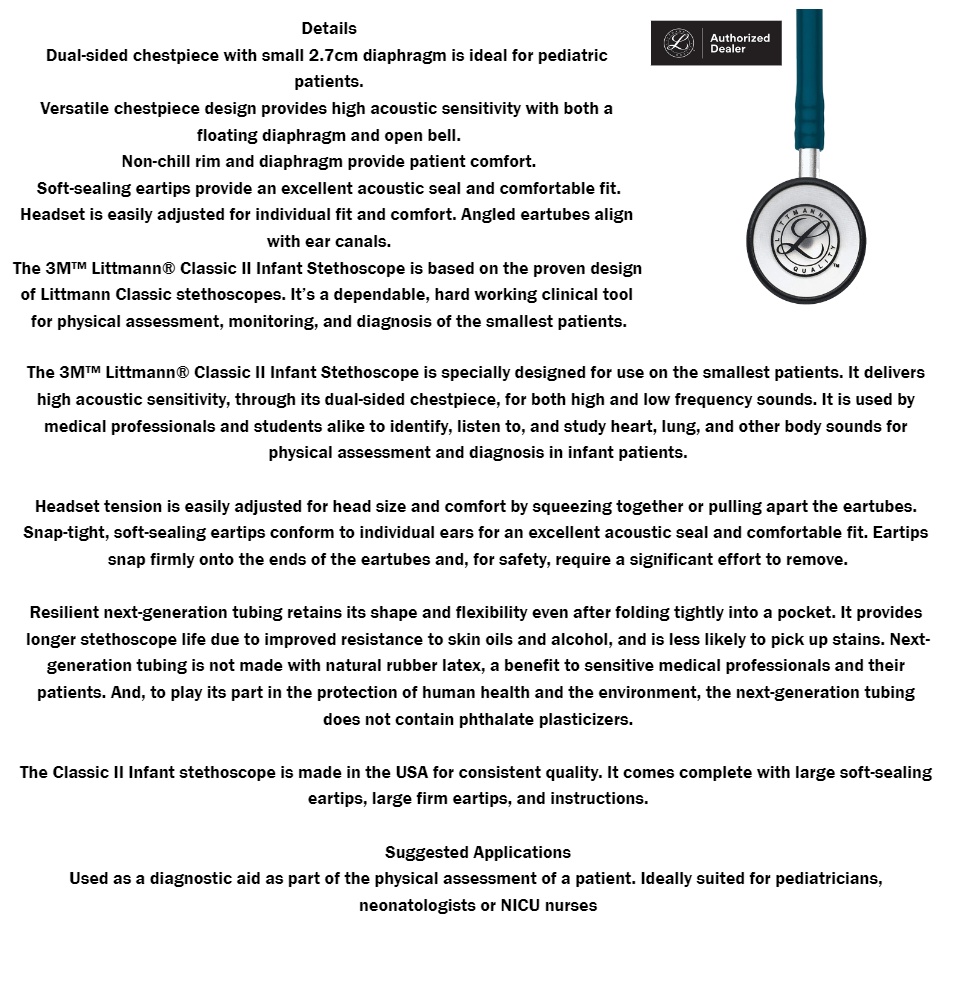3M™ Littmann® Classic II Infant Stethoscope
3M™ Littmann® Classic II Infant Stethoscope
Description
Description
The 3M™ Littmann® Classic II Infant Stethoscope is specially engineered for use on the smallest patients, delivering exceptional acoustic sensitivity. Its dual-sided chestpiece includes a 2.7cm diaphragm, designed to capture both high and low frequency sounds, making it an essential tool for pediatricians, neonatologists, and NICU nurses. The versatile chestpiece design offers both a floating diaphragm and an open bell, ensuring accurate assessments.
The stethoscope provides comfort for both medical professionals and patients, with soft-sealing eartips that create an excellent acoustic seal and a non-chill rim for patient comfort. The angled eartubes align with ear canals for optimal sound transfer, while the headset is easily adjustable for a personalized fit.
Built with next-generation tubing, the stethoscope resists skin oils and alcohol, prolonging its life and preventing stains. Its latex-free construction and absence of phthalate plasticizers make it safe for sensitive users. The Classic II Infant stethoscope is made in the USA and comes with large soft-sealing eartips, firm eartips, and instructions. It is an essential diagnostic aid for physical assessments, used widely by medical professionals and students alike.
Suggested Applications:
- Ideal for pediatricians, neonatologists, and NICU nurses
- Used as a diagnostic tool for physical assessment of infant patients.


Features
Features
- Dual-sided chestpiece with small 3.3cm diaphragm is ideal for infant patients.
- Versatile chestpiece design provides high acoustic sensitivity with both a floating diaphragm and open bell.
- Non-chill rim and diaphragm provide patient comfort.
- Soft-sealing eartips provide an excellent acoustic seal and comfortable fit.
- Headset is easily adjusted for individual fit and comfort.
- Angled eartubes align with ear canals.
Directions
Directions
1. Insert the Stethoscope in Your Ears: Orient the eartips toward your nose.
2. Customize Headset Tension for Comfort and Sound Quality: Adjust the eartubes by pulling them apart or squeezing them together.
3. Select the Active Side of the Chestpiece: The stem includes a mark that designates the acoustically active side. Rotate the chestpiece to switch between active sides.
4. Utilize the larger chestpiece for adult patients and the smaller side for pediatric or slender patients, bandaged areas, or carotid assessment.
Share



















